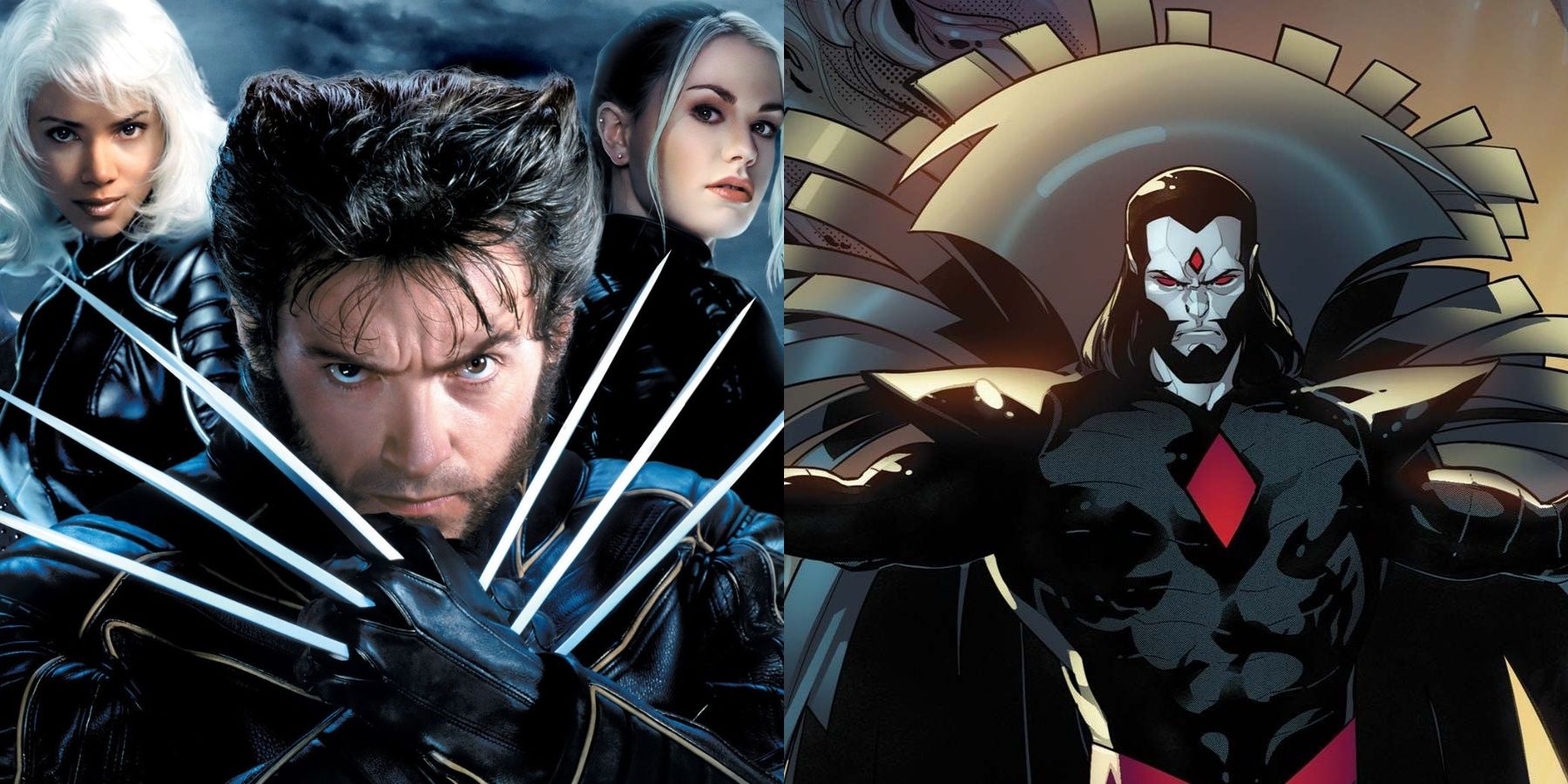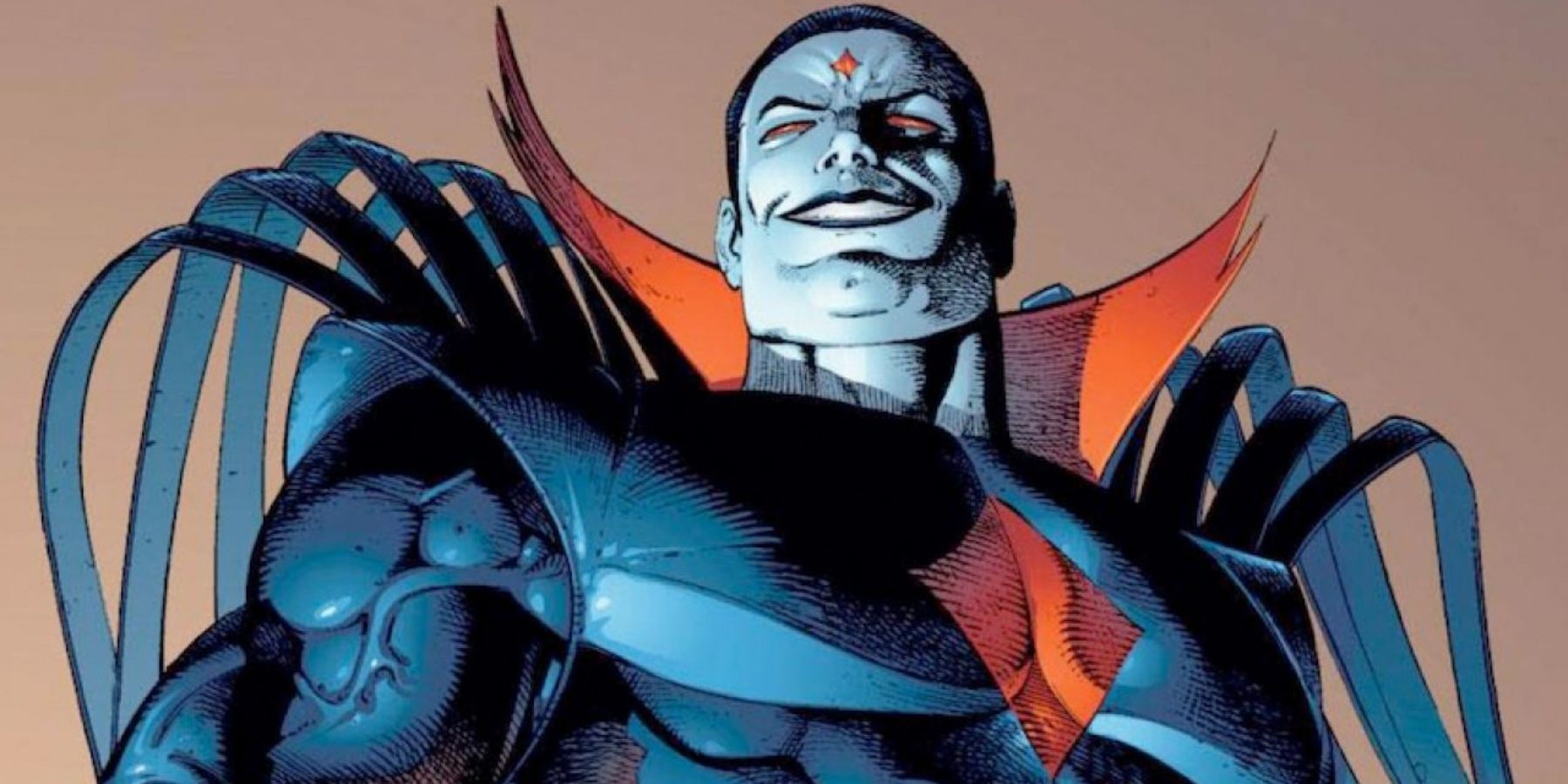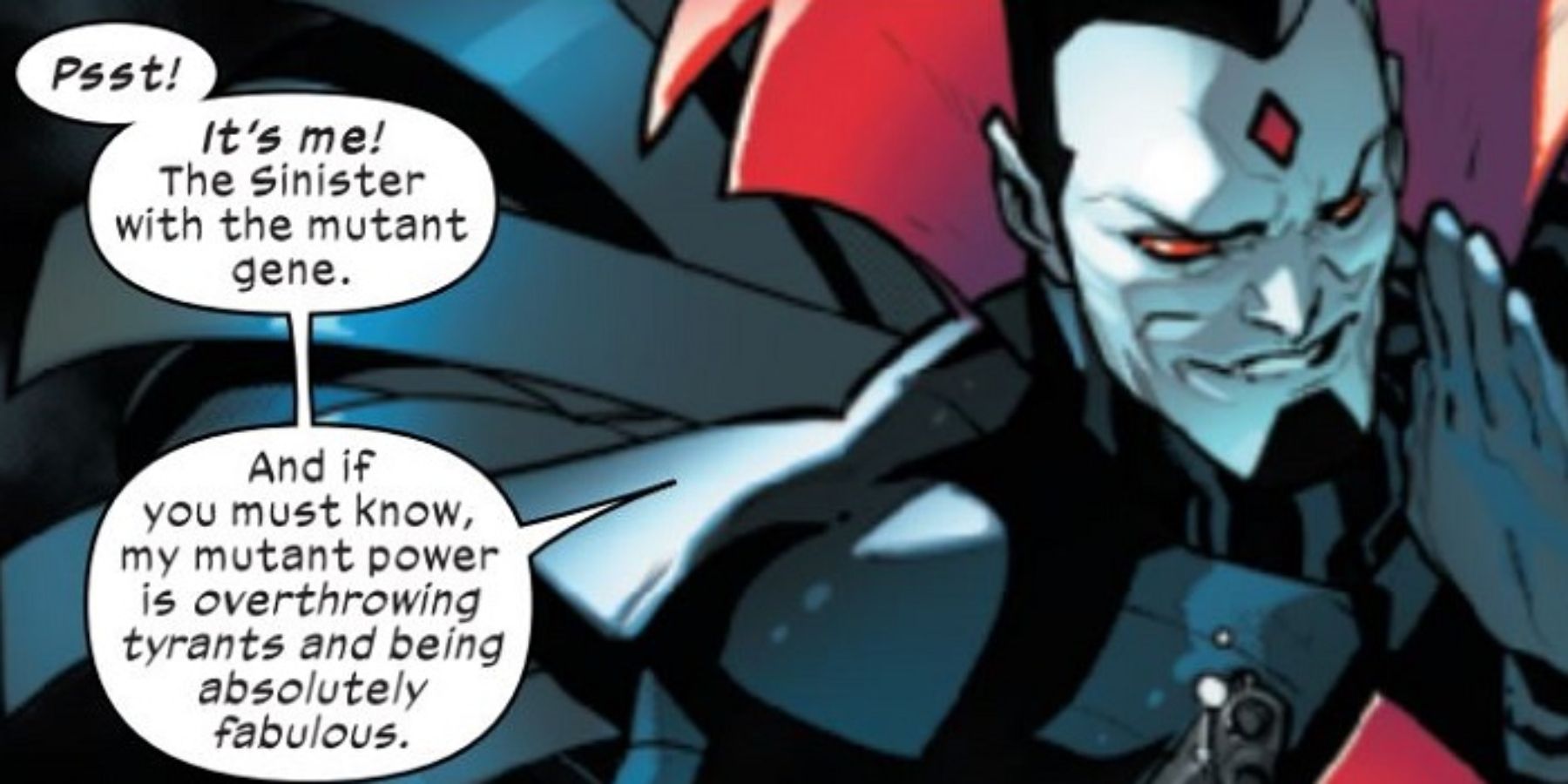As of right now, there’s no news on when and how the X-Men will be making their long-awaited debut to the Marvel Cinematic Universe, but that hasn’t stopped massive amounts of speculation on what their inevitable arrival will look like. Countless fans have already come up with their own ideas for what they want the MCU’s take on the iconic mutant team to look like — and what villains they want the heroes to face.
The obvious choice for the X-Men’s first MCU enemy is their legendary nemesis Magneto, but considering he’s already appeared in every mainline X-Men film so far, it’s possible that Marvel Studios might hold off on him to help differentiate the new X-Men series from its predecessors. In fact, most of the X-Men’s popular foes have already appeared on film, from Apocalypse to the Sentinels to the Hellfire Club. However, there’s still one major member of the X-Men’s rogues’ gallery who has yet to debut on the silver screen: Nathaniel Essex, aka Mister Sinister.
If the name Essex sounds familiar to fans of the X-Men films, there’s a good reason for that. The post-credits scene of X-Men: Apocalypse features a group of mysterious men in suits entering the Weapon X facility from earlier in the film and stealing a vial of Wolverine’s blood, which is placed in a briefcase labeled “Essex Corp.” This clear foreshadowing towards Mister Sinister was obviously never followed up on, but not without a few false starts. Many fans theorized that this scene was a teaser for Logan, which would feature Sinister as its main antagonist. And while that film did indeed involve an evil British geneticist (played by Richard E. Grant, no less) creating a clone of Wolverine, said mad scientist was decidedly not Nathaniel Essex. Deadpool 2 includes even more hints towards Sinister — the facility where the young mutant Firefist was experimented on is housed at the “Essex House for Mutant Rehabilitation.” Even the infamously-delayed New Mutants continues to allude to Essex Corp’s machinations, but without any appearances from the man himself.
Ultimately, with the failure of 2019’s Dark Phoenix, the Fox-produced X-Men series came to an unceremonious end without ever properly introducing Mister Sinister. However, this may be for the best. After all, it gives Marvel Studios the opportunity to deliver their own take on the character without the baggage of any previous big-screen adaptations. And with a villain as storied as Sinister, there’s plenty of material to draw on from the comics. Created by writer Chris Claremont and artist Marc Silvestri, Mister Sinister first appeared in 1987’s Uncanny X-Men #221 as the mastermind behind the squad of mutant assassins called the Marauders. Claremont depicted Sinister as a stoic and shadowy figure with an enigmatic past and an obsession with Cyclops — eventually, it was revealed that Cyclops grew up in an orphanage that was a front for Sinister’s experiments, not unlike the one featured in Deadpool 2.
Later writers would further explore Mister Sinister’s backstory, revealing his origins as a Victorian-era scientist bent on unraveling the secrets of evolution, even if it meant committing atrocities against human test subjects. Essex eventually discovered a specific gene that allowed normal humans to develop mutant powers: the “Essex gene”, later known as the X-Gene. Essex’s experiments grew increasingly macabre, making him a pariah. Essex eventually encountered the immortal mutant Apocalypse, who took him on as an apprentice and used Celestial technology to transform him into an immortal being. In the centuries that followed, Sinister continued his cruel experiments on mutants — he encountered Wolverine in the early 1900s, and even experimented on a young Magneto at Auschwitz (a role that was filled by Sebastian Shaw in X-Men: First Class).
In modern times, Mister Sinister has preferred to work in the background — unlike Magneto or Apocalypse, his most famous stories are ones where he serves as a manipulator from the shadows rather than an active menace. Prominent storylines like “Mutant Massacre”, “Inferno”, and the Legacy Virus arc are all kicked off by Sinister’s actions, even if he doesn’t serve as the primary antagonist. At one point, he even stole the power of a Celestial to transform San Francisco into his own personal kingdom inhabited solely by clones of himself. In terms of recent developments, the 2010s have seen writers like Kieron Gillen, Jonathan Hickman, and Zeb Wells reinvent Sinister’s personality, taking him from a cold and ominous mastermind to a flamboyant and snarky showman — all while keeping his scheming nature and ruthless hunger for knowledge intact.
Looking at Mister Sinister’s comic history, it’s plain to see why he’s become one of the X-Men’s most iconic nemeses. He has personal connections to several key figures in the series, directly and indirectly caused plenty of major storylines, and has a distinct backstory that spans entire centuries. Additionally, he’s one of the few villains who can fluctuate seamlessly between comedic and menacing, and his unique motivation makes him a very different kind of X-Men villain — he’s motivated purely by unhinged scientific curiosity, not any political or social ideology like most of his fellow rogues.
Any new adaptation of a well-known series needs to set itself apart from its predecessors in some way, to carve out its own identity while still staying true to the source material. And while a good villain is only one part of making a great superhero movie, utilizing Mister Sinister as an early foe of the MCU’s X-Men would be a perfect step in the right direction. After all, he’s the most prominent X-Men foe who has yet to get a chance to shine on the silver screen — so while Magneto, Apocalypse, the Sentinels, Weapon X, and Dark Phoenix are all welcome in the MCU, Nathaniel Essex’s time in the spotlight is still well past due.



